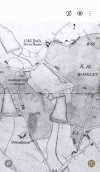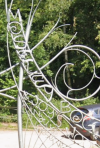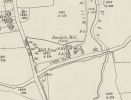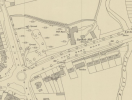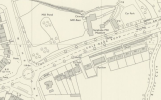Where you do see Gracewell Cottages surrounded is by the sandpit and the very long gardens of Victorian houses beyond it. Part of these are on former Sarehole Estate land, which had been sold to increase the length of the plots laid out for big houses by the road. The Taylor Estate had been unable to sell off the Gracewell Cottages site, because it had been bought by A.H. Foster to build homes for his servants/employees. You couldn't make up what happened more recently. The land going up Wake Green Road was gifted to the Catholic church in the landowner's will, and they proposed building on the gardens. The city refused to pass the plans and after a number of years the church agreed to lose part of the long gardens to City open space. So the Sarehole wedge was reinstated, and the Moseley suburb line was pushed back a bit. The most recent irony is the name given to the retirement complex built over one of the Victorian houses, which had stood sadly waiting for demolition for years. The name given is The Shires, inspired by Tolkien.
As a result of the late Joy Fifer's campaigning, which was actually based on wanting to preserve the abandoned ends of some of the very long gardens, where she had found exotic garden plants now growing 'wild', the open space acquired the name of Moseley Bog, which is now an internationally known name because of its Tolkien associations. Purists might prefer it to be known as Sarehole Swamp, but that is not going to happen.

